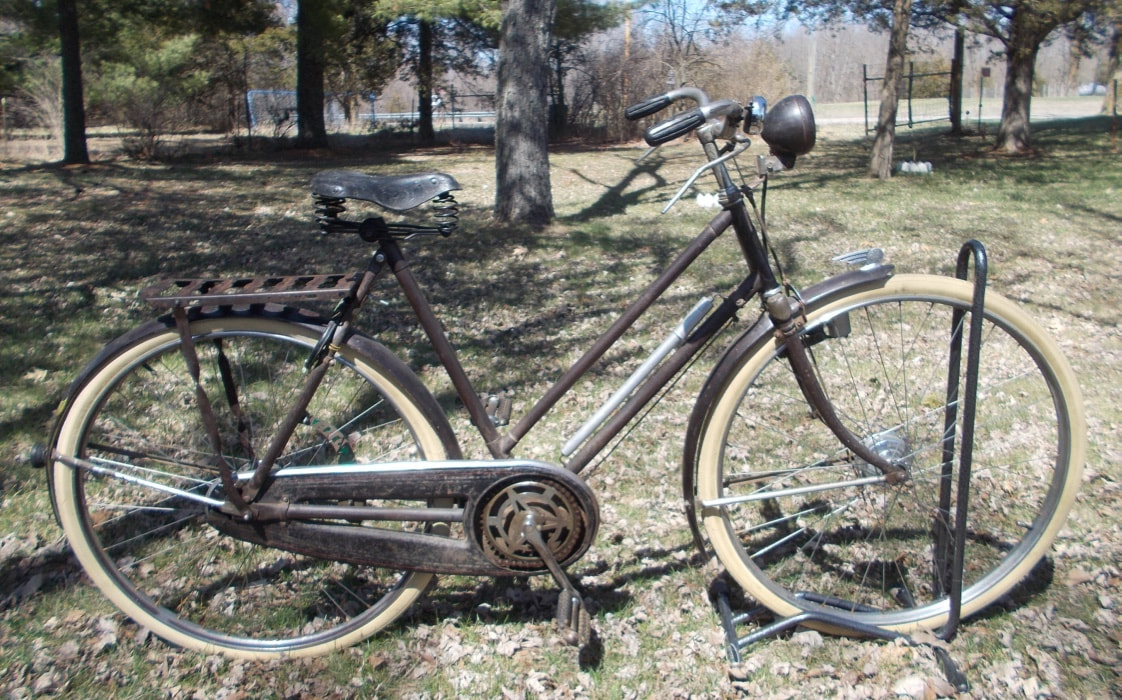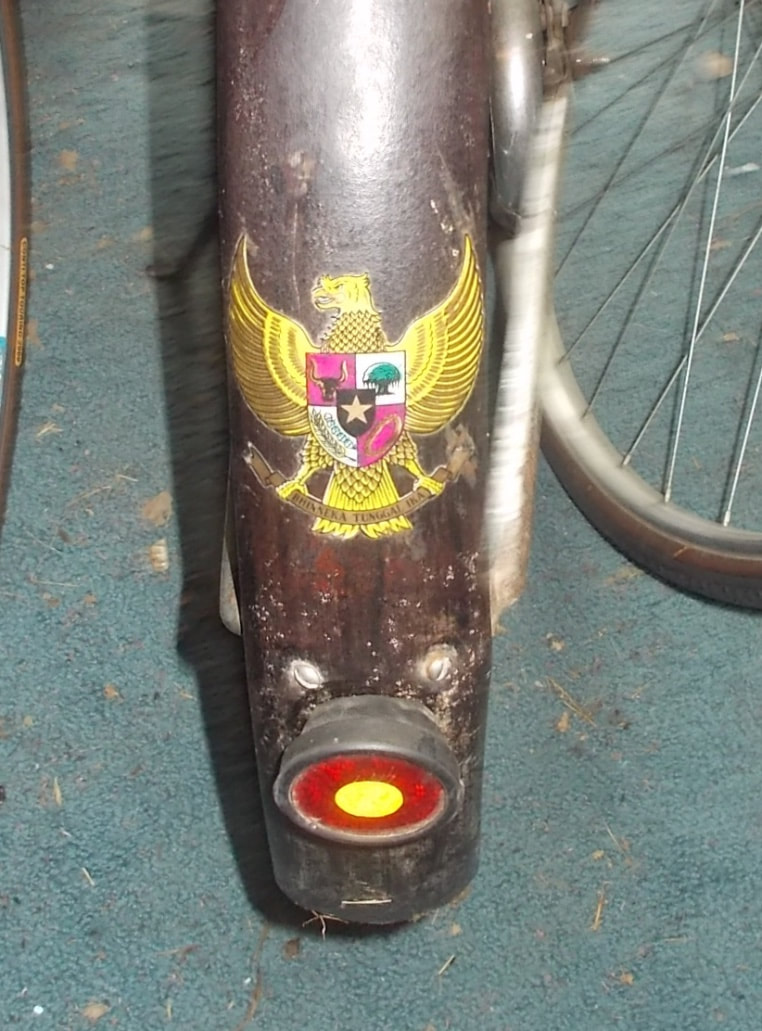On the rear fender of my 1920s Hercules bicycle is a transfer: the "Garuda Pancasila," national emblem of Indonesia (a mythical bird with a heraldic shield representing the national ideology Pancasila, or "Five Principles.") My Indonesian friend, Mohamad Intan, tells me that bicycles similar to the one you see here are still common sights in his country, especially on Java Island, where people still use bicycles for daily transportation to school, office, and rice fields.
Bicycles were introduced to Indonesia during the Dutch colonial period (a dark time for the country, marked by great suffering), and were originally enjoyed only by aristocrats and rulers (and today, beautifully made bicycles by Fongers and other British manufacturers are highly sought after by collectors). Following Independence Day, slowly but surely the bicycle became more affordable for the average citizen. The British maker Hercules began exporting bicycles to Indonesia around 1922. I believe the bike you see here was among these early exports. How and precisely when it came to Illinois after serving as basic transportation in Indonesia for seventy or eighty years is unknown. I decided to leave the bike as found, with "upgrades" such as the Chinese drum brakes and chaincase, made decades ago (Chinese replacement parts are more affordable for the typical Indonesian), and the fender mascot, which is probably Japanese (Mohamad informs me that the Dutch were defeated by the Japanese in the 1940s, and with Japanese colonization came more and more suffering for the people).
My Hercules has lost virtually all of its paint, yet the metal has not rusted after spending years in my outbuilding. I attribute this phenomenon to the touch of the human hand over many years. Like me, my friend Mohamad Intan wonders how this British bicycle traveled from Indonesia to a small town in northern Illinois.
We romance the racing bicycle, we revere the pro riders, but this is the bicycle that improved the lives of millions of hard working people around the world.
Bicycles were introduced to Indonesia during the Dutch colonial period (a dark time for the country, marked by great suffering), and were originally enjoyed only by aristocrats and rulers (and today, beautifully made bicycles by Fongers and other British manufacturers are highly sought after by collectors). Following Independence Day, slowly but surely the bicycle became more affordable for the average citizen. The British maker Hercules began exporting bicycles to Indonesia around 1922. I believe the bike you see here was among these early exports. How and precisely when it came to Illinois after serving as basic transportation in Indonesia for seventy or eighty years is unknown. I decided to leave the bike as found, with "upgrades" such as the Chinese drum brakes and chaincase, made decades ago (Chinese replacement parts are more affordable for the typical Indonesian), and the fender mascot, which is probably Japanese (Mohamad informs me that the Dutch were defeated by the Japanese in the 1940s, and with Japanese colonization came more and more suffering for the people).
My Hercules has lost virtually all of its paint, yet the metal has not rusted after spending years in my outbuilding. I attribute this phenomenon to the touch of the human hand over many years. Like me, my friend Mohamad Intan wonders how this British bicycle traveled from Indonesia to a small town in northern Illinois.
We romance the racing bicycle, we revere the pro riders, but this is the bicycle that improved the lives of millions of hard working people around the world.
Around-the-World 1920s Hercules bicycle ©Daniel Dahlquist






